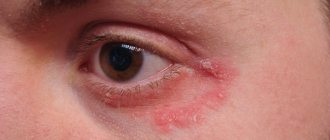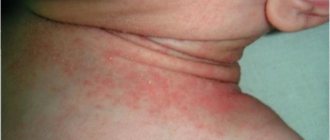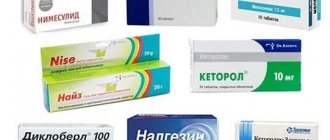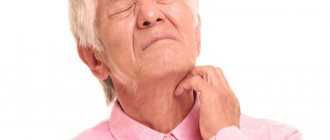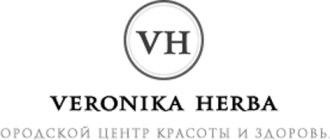Causes of prurigo
The main reason for the occurrence and further development of pruritus is sensitization of the body, which leads to the developing processes of various inflammations of an allergic nature. The main agents that sensitize the body are various foods. If we talk about infants, then most often they do not tolerate cow's protein or even mother's milk well; for older children, the main cause of the development of allergic inflammation can be mushrooms, eggs, chocolate, citrus fruits and even fish. For adults, food sensitizers are honey, alcohol, coffee, smoked foods, and spices.
Of great importance in the occurrence and further development of pruritus in children is the possible tendency to allergic processes, which can manifest themselves both in the form of diathesis and in the form of fermentopathy of the digestive tract. The factor that precedes the occurrence and development of pruritus not only in children, but also in adults, is autointoxication and autosensitization of the body, which clearly occurs from the intestinal cavity in the case of dysbacteriosis, dyskinesia and helminthic infestation. The main provoking factors for pruritus in adults are various neuro-emotional disorders (including sleep disturbances and neurasthenia), as well as diseases such as diabetes mellitus, lymphogranulomatosis, cirrhosis of the liver, tumors of internal organs, hepatitis or cholecystitis.
Some researchers believe that the occurrence of prurigo can be explained by insect bites (primarily fleas and ticks). This theory is explained by the fact that prurigo is most often found in open countryside.
Preventive actions
Naturally, such a dangerous and serious disease is easier to prevent. Moreover, there are some preventive measures. For example, you should carefully structure your diet, excluding allergens from it. In addition, it is worth fighting for your peace of mind as much as possible in order to eliminate stress, use insect repellents, protect your skin from the sun, treat ailments of internal organs that can cause specific diseases, and undergo regular medical examinations.
Children's prurigo
The childhood form of prurigo usually begins with the characteristic appearance of rashes on the skin, which can take the form of nodules no larger than 5 mm in size. After some time, small bubbles may appear on the surface of such rashes. If such bubbles burst, then in their place point erosions are formed, which are covered with a special type of crusts - these are serous crusts. It should also be said that in addition to the rash located on the skin of the face and torso, such rashes can also be concentrated on the surface of the extensor limbs. Interestingly, the location of papulovesicles can be both on the skin of the palms and the skin of the feet. Their size can reach about 5-6 mm, they can have an edematous base and a special inflammatory rim. The main distinguishing feature of prurigo is the very strong itching that is unique to it. If you scratch the areas affected by scabies, a large amount of excoriation may appear.
In addition to the main symptoms, children may experience various neuropsychic disorders, for example, poor sleep, previously uncharacteristic moodiness, increased levels of irritability, and tearfulness. Such symptoms can be explained both by prurigo itself, accompanied by severe itching and general autointoxication of the body, and by congenital instability of the nervous system.
Very often, it is typical for patients suffering from pruritus that the symptoms may disappear after, for example, milk is excluded from the diet. However, there are also cases when infantile prurigo transforms into pruriginous eczema or atopic dermatitis. The main sign of such a change may be the appearance of white-type dermographism or a reduced type of abdominal reflex, as well as the possible disappearance of the plantar reflex. Children with prurigo may have characteristic dry skin, enlarged femoral (or inguinal) lymph nodes, or anhidrosis.
Anatomy of a question
Prurigo, more scientifically known as purigo, refers to an itchy dermatosis in which the rash is represented by small nodules with small blisters in the center. In this case, the itching is very pronounced and is often characterized as unbearable. People begin to scratch the place of discomfort, thereby aggravating the situation, since a deep wound appears in this place.
Get out of here! Fighting scabies Read more
Modern medicine divides this pathology into three types:
- infantile pruritus, which manifests itself mainly in the first year of a child’s life, but children under 5 years of age are not immune from it;
- prurigo of adults, observed mainly in the elderly;
- nodular prurigo, which most often affects women over 50.
At risk for the development of such a disease, experts note, are people with metabolic disorders, allergies, a predisposition due to hereditary factors, the presence of neuropsychiatric diseases, as well as those who live in unfavorable conditions in terms of sanitation. Pruritus can also occur due to a lack of vitamins.
The cheeks were covered. Why does dermatitis occur? More details
Prurigo in adults
If we talk about pruritus, which is typical for adults, it should be said that it manifests itself in the form of nodular rashes on the stomach, buttocks, back and in the bends of the arms and legs. In adults, pruritus is also accompanied by severe itching. It is also characteristic of adult prurigo that the face remains unaffected during the course of this disease. Another characteristic symptom of adult pruritus is dense papules in the shape of hemispheres or cones, which are brown or red in color, and the size of which is no more than 5 mm. In addition, the patient may experience papules, which are characterized by a bright red color and very severe itching. Excoriations may be noted on the body, which are usually covered with a hemorrhagic crust.
The course of prurigo can be acute or chronic. In the chronic course, in addition to skin symptoms, a neurotic syndrome may be observed, which includes sleep disturbance, the presence of emotional lability and severe irritability.
During pregnancy
In rare cases, prurigo occurs in pregnant women. Most likely, it is caused by changes in the endocrine, immune, nervous and digestive systems, as a result of which the condition of the skin changes. The disease is also associated with an increase in a woman’s weight during pregnancy, especially during multiple pregnancies, in which the skin of the abdominal wall is greatly stretched. Prurigo develops in the last weeks of pregnancy or after childbirth. Itchy papules appear on the skin, which merge into plaques. Prurigo rashes initially appear in the areas of abdominal stretch marks, and then spread to the buttocks and thighs. In places where the muscles are severely stretched, the connective tissue is sometimes damaged, and this leads to a more pronounced inflammatory process and aggravates the course of the disease. The rash goes away within 4-5 weeks. Prurigo does not affect the fetus, but may recur during subsequent pregnancies.
Diagnosis of prurigo
Both a dermatologist and a general practitioner can diagnose pruritus. Usually, it is enough for a dermatologist to conduct a general examination or dermatoscopy to make a final diagnosis. If pruritus and a secondary infection associated with it are suspected, a bacterial culture of the scraping is usually carried out in order to detect the cause and its causative agent. Bacterial culture also helps determine sensitivity to a particular antibacterial drug. If pruritus occurs against the background of one of the types of disorders associated with the gastrointestinal tract or against the background of a disease of the endocrine system, then you cannot do without consulting an endocrinologist or gastroenterologist. In addition to bacterial culture, a stool analysis is also carried out to detect helminths, as well as an analysis for dysbacteriosis. If necessary, a patient suffering from prurigo may be prescribed an ultrasound of the liver or pancreas, as well as liver tests or a special type of pancreatic enzyme test.
When diagnosing pruritus, it is very important to exclude the occurrence of any dermatological disease, which may be similar to prurigo due to a similar clinical picture. In general, pruritus can be distinguished from any other dermatological diseases by its location. A prurigo rash can be easily distinguished from ordinary atopic dermatitis, toxidermia, and even more so scabies.
In the case of atopic dermatitis, the rash will be localized, as a rule, on the flexor surfaces. In the case of scabies, dermatoscopy will help to detect its typical passages, while a positive result of its examination will confirm the diagnosis. It should also be said that toxidermia is characterized by a connection between rashes and medications.
List of sources
- Zaslavsky D.V. Aspects of pediatric dermatology: from strophulus to atopic dermatitis / Medical advice. — 2022, No. 19 p. 154-157.
- Gorlanov I.A., Milyavskaya I.R., Leina L.M., Zaslavsky D.V., Olovyanishnikov O.V., Kulikova S.Yu. Pediatric dermatovenereology. M.: IG GEOTAR-Media, 2022. 512 p.
- Dermatovenerology. National leadership. Brief edition / ed. Yu. S. Butova, Yu. K. Skripkina, O. L. Ivanova. - M.: GEOTAR-Media, 2013. - 896 p.
- Zaslavsky D.V., Novikova V.P., Chuprov I.N. Probiotics in the prevention and treatment of atopic dermatitis in children. Questions of Practical Pediatrics, 2016, 11(2): 51-57.
- Ermilova A. I., Menshchikova G. V., Pilguy E. I. Pruritic dermatoses: approaches to treatment / Consilium medicum. Pediatrics. 2014 No. 3, pp. 74-77.
Treatment of prurigo
The main thing in treating pruritus is diet. Doctors advise newborn babies to give 10 drops of expressed milk 15 minutes before receiving breast milk. The latter is necessary to reduce the level of sensitization of the body. You should also include cottage cheese, kefir or carrot juice in your diet. If we talk about pregnant or lactating women, then they also need to follow a diet, reducing the amount of fish, citrus fruits, pickles or eggs consumed.
Older children, as well as adults who are sick with pruritus, are recommended to consume fermented milk products (including cottage cheese, fermented baked milk and kefir), as well as beef, but only in boiled form, fruits and vegetables (especially cabbage, peas, carrots and spinach).
If there is a helminth infestation in the human body, it is necessary to carry out deworming. It would also be very desirable to sanitize the foci of this infection, which may include otitis media, tonsillitis, sinusitis, carious teeth, dysbiosis and treatment of gastrointestinal diseases.
To treat pruritus, digestive enzymes such as mezim or festal are used, as well as B vitamins, vitamin C or A. The use of antihistamines, such as fenkarol or desloratadine, suprastin or loratadine, as well as drugs containing calcium is also desirable in the treatment of pruritus . A beneficial effect is provided by taking special medicinal baths, which are made with bran or a decoction of oak bark, chamomile or string. An additional remedy for the treatment of pruritus is the use of ointments or creams containing glucocorticoids. In more severe cases, small doses of glucocorticosteroids are prescribed, administered orally.
If we talk about the use of physiotherapeutic methods, then suberythemal doses of ultraviolet irradiation are used to treat pruritus, as well as phonophoresis, microwave therapy (extending to the area of the adrenal glands), electrophoresis and DDT, applicable to the area of cervical sympathetic nodes.
Diet
Hypoallergenic diet
- Efficacy: therapeutic effect after 21-40 days
- Timing: constantly
- Cost of products: 1300-1400 rubles. in Week
Diet for allergies in children
- Efficacy: therapeutic effect after 15-21 days
- Time frame: until the allergic reaction to the food allergen disappears
- Cost of products: 1500-1600 rubles. in Week
Hypoallergenic diet for nursing mothers with child allergies
- Efficacy: therapeutic effect after 30 days
- Timing: constantly
- Cost of products: 1600-1700 rubles. in Week
Regardless of age, it is important to follow a hypoallergenic diet. Completely excluded:
- Products containing dyes and preservatives.
- Citrus.
- Eggs.
- Seafood.
- Sugar.
- Dried fruits, baked goods and other high-carbohydrate foods.
- Chocolate.
- Coffee and cocoa.
- Smoked meats.
- Spices.
- Canned food, marinades.
- Alcohol.
- Fatty and fried foods.
An anti-allergenic menu may include buckwheat, turnips, zucchini, greens, dairy products, plain yogurts, cucumbers, cabbage, spinach, plums, green apples, olive oil, boiled rabbit and veal, dried apples, bread (corn, oat, buckwheat), juices and fruit drinks. More detailed recommendations can be found in the diet for allergies in children and the hypoallergenic diet.
Nutrition rules
Doctors believe that an important point in the treatment of the disease in question is nutrition - it should be balanced and fortified.
The diet of an adult patient should consist of vegetables and fruits, fish and dairy products. In principle, there are no strict restrictions on food, but you must adhere to the following rules:
- It is better to replace animal fats with sunflower oil;
- give preference to low-fat foods, steamed or baked foods;
- give up foods rich in carbohydrates - baked goods, pasta, potatoes;
- limit the amount of salt you consume, and preferably avoid it altogether.
Prurigo is a rather unpleasant disease that not only changes a person’s appearance, but also has a direct impact on the psycho-emotional background and rhythm of life. Only competent treatment and compliance with all the recommendations of the attending physician will completely get rid of this pathology.
Medicines
The main place in the treatment of prurigo is occupied by drug treatment. All other methods (vitamin therapy, physiotherapy and folk remedies) can only be accompanying.
To relieve itching and eliminate rashes, the following antihistamines are prescribed:
- Cetirizine;
- Dimethindine;
- Clemastine;
- Chlorapyramine and others.
To eliminate the same symptoms, desensitizing agents are prescribed as an auxiliary treatment:
- Sodium thiosulfate;
- Calcium gluconate;
- Smecta;
- Enterosgel;
- Calcium pantothenate and others.
For pruritus caused by dysbacteriosis, the following medications are recommended:
- Bificol;
- Linux;
- Digestal;
- Trimedat;
- Hilak-forte and other probiotics.
For pancreatic dysfunction, the following medications are prescribed:
- Pancreatin;
- Enzistal;
- Creon;
- Mezim and others.
In case of regression, during treatment of the disease, Dexamethasone and Prednisolone are prescribed.
For pruritus caused by mental disorders, sedatives will help:
- Novo-passit;
- Peony tincture;
- Persen;
- Neuroplant;
- Adaptol and others.
Glucocorticosteroid ointments are used to treat rashes:
- Fluorocort;
- Akriderm;
- Flucourt;
- Sinaflan;
- Rederm et al.
In severe cases of rashes that have led to ulcers and erosion, applications with 2% boron-naphthalan or boron-ichthyol ointments are prescribed.
Physiotherapy
Pruritus is treated not only with medications, but also with alternative treatment methods. Physiotherapy helps relieve severe symptoms - rashes and itching. The effect of treatment with this method is clearly visible in the photo below.
Therapy has several types:
- Radon baths, which have antispasmodic and absorbable effects. In addition, they relieve pain, have a calming effect and eliminate insomnia.
- Sulfide baths normalize the functioning of the sweat and sebaceous glands, metabolism and stimulate the redox activity of skin receptors.
- Ultraviolet irradiation stimulates the production of histamines and other substances. With its help, metabolism is normalized and the functioning of the central nervous system is improved.
- Inductothermy helps remove toxic substances from the body, strengthens the immune system, and speeds up metabolism.
- Microwave therapy has an anti-inflammatory effect, relieves pain, and normalizes metabolism. In addition, it improves blood flow to the skin, and therefore improves its saturation with oxygen and vitamins.
- Phonophoresis with hydrocortisone improves the effect of local drugs.
- Diadynamic currents improve blood circulation, eliminate pain and have a sedative effect.
- Selective phototherapy accelerates the restoration of damaged skin, eliminates scars, and normalizes metabolic processes in the skin.
- Electrophoresis with drug solutions accelerates skin restoration, relieves inflammation, eliminates pain and has a sedative effect. In addition, this procedure strengthens the immune system and normalizes metabolism.
- Electrosleep is prescribed to children from 4 years of age and adults. Eliminates disturbances in the functioning of the nervous system, normalizes sleep and reduces pain sensitivity.
- Climatotherapy (thalassotherapy) normalizes sleep, restores the functioning of the nervous system and the protective functions of the skin.
general information
Each type of disease has characteristic symptoms. The main characteristics are similar for all varieties.
You should suspect pruritus when:
- pustular rashes;
- unbearable itching;
- bloody crusts in places of scratching.
Is pruritus contagious? Despite the abundance of nodular rashes, the itching and poor condition of the skin of a patient diagnosed with prurigo is not dangerous. The disease is not infectious in nature and is not transmitted through contact.
Vitamin therapy
Pruritus, the symptoms of which are presented in this article, as well as all skin lesions, can be treated not only with medications, but also with strengthening and vitamin-containing medications.
Vitamin therapy for this disease is carried out using the following vitamins:
- groups B (B12 and B1);
- nicotinic acid;
- A and C;
- calcium.
It is not recommended to take vitamin preparations without a doctor’s prescription, since only he can draw up the correct treatment regimen.
Uncontrolled intake of vitamins can lead to hypovitaminosis or cause an allergic reaction.
Propolis-based ointment
According to the observations of traditional healers, it is possible to get rid of the manifestations of pruritus by treating the foci of the disease with an ointment prepared using propolis. Prepare the product according to the following recipe:
- take 100 grams of butter;
- heat 15 grams of propolis in a water bath;
- the ingredients are mixed and kept over low heat until a substance of homogeneous consistency is obtained;
- The ointment is cooled and then poured into a dark glass bottle.
The product is used to treat rash-affected skin areas 3 times a day. Due to the anti-inflammatory properties of propolis, regeneration of damaged skin is observed. Oxidative reactions in local tissues are eliminated. The patient ceases to be bothered by the sensation of itching. There is a general improvement in well-being. Under the influence of butter, the epidermis is qualitatively moisturized and becomes elastic.
Burdock root ointment
Burdock contains an abundance of biologically active substances that eliminate allergic and inflammatory reactions in the structure of epidermal tissues. To prepare a healing remedy, take the dried root of the plant. The raw materials are thoroughly crushed and ground in a mortar to a powdery state. The resulting substance is combined in equal proportions with medical Vaseline. The ointment is placed in a dark glass container. The product is allowed to brew in a place where the sun's rays do not penetrate for several days. The medicine is used to treat the rash-affected areas of the epidermis after taking a warm bath.

